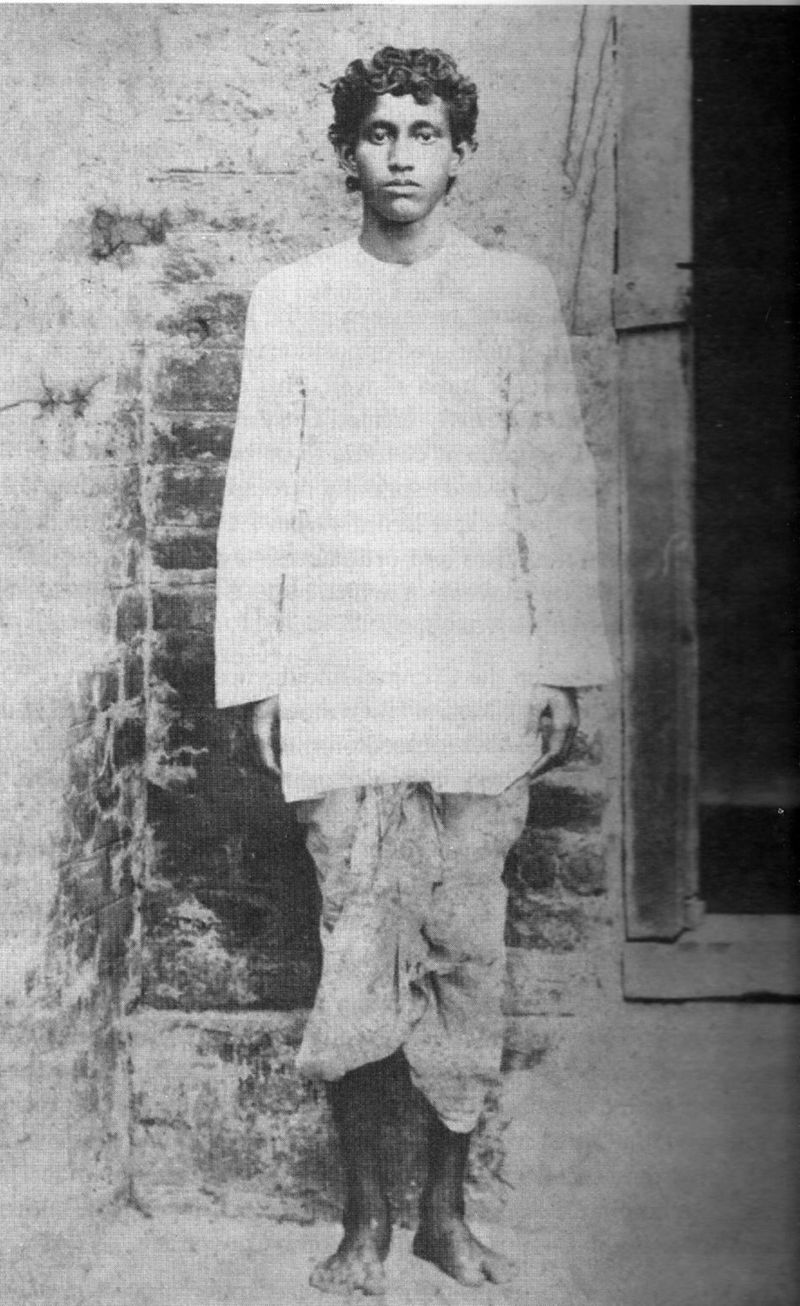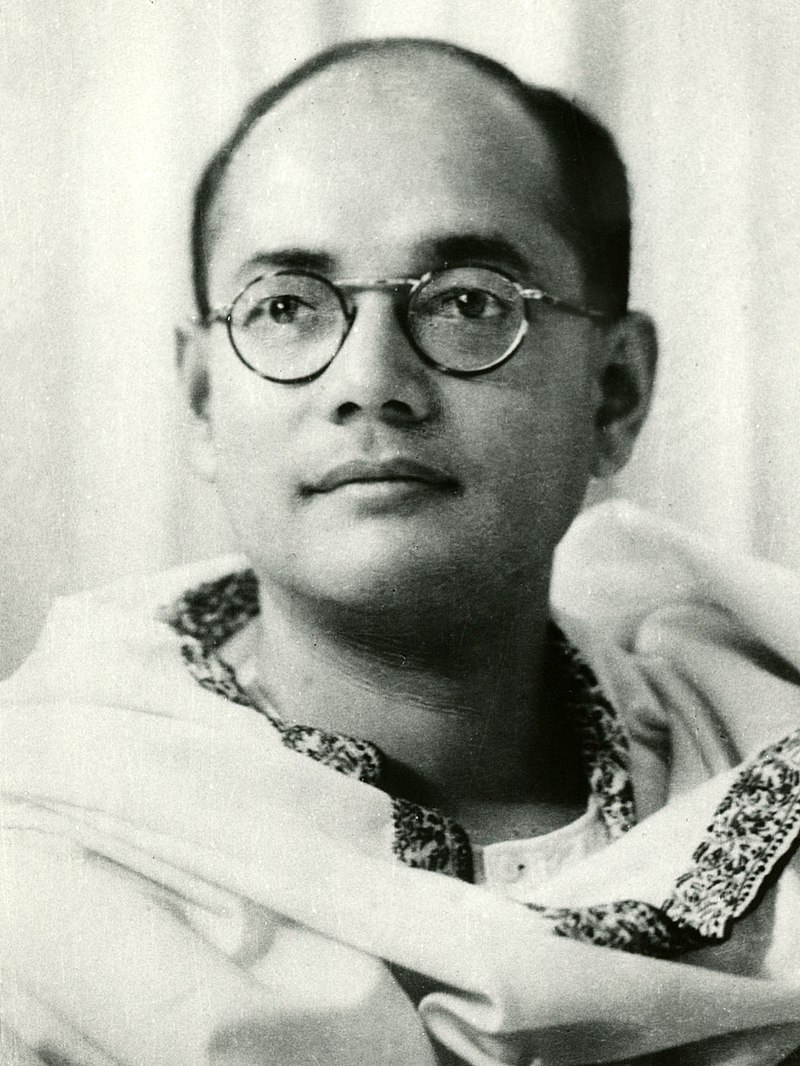
Coat of Arms of the Anushilan Samiti
The Anushilan Samiti traces its history back to 1902 when it was established by Satish Chandra Bose and Barrister Praanath Mitra in present-day Kolkata. It was a prominent organization during India's freedom struggle and was known for its revolutionary zeal and patriotic fervour. The Samiti was strongly committed to the idea of a nationwide revolt to end the British Raj in India and soon came to be known as a radical thought. It focussed on effective training and capacity building of its members, equipping them with the requisite knowledge, skills, and strength to put up a strong fight against the British forces. The Samiti also worked closely to generate wider consciousness amongst the masses and inspire nationalist sentiment in a more concrete fashion. Its growing influence was a significant cause of concern for the British authorities. After a steady decline following the First World War (when several of its members aligned with the socialist ideologies and the Indian National Congress), the Samiti eventually dissolved into the Revolutionary Socialist Party before the Second World War.
The beginning of the Anushilan Samiti is a story worth revisiting. It was initially formed as a society for youth and gymnasium, to engage in traditional physical activities such as lathi play, as well as to participate in social works in Calcutta to help the downtrodden. As time passed and participation increased, in numbers as well as dimensions, the Samiti came to be recognised for its spirited nationalism. It was associated with important political leaders and freedom fighters such as Satish Chandra Bose, Praanath Mitra, Barindra Kumar Ghosh, and Bipin Chandra Pal. The Samiti worked in utmost secrecy and silence, such that they could continue their anti-British efforts without being caught and stopped from achieving their final goal. From the outside, most of these societies were known as mere akharas or centers for physical fitness and activities, but within it was a robust system of training and preparation, brimming with the sense of supreme sacrifice for the motherland and unconditional devotion to the cause of freedom.

Praanath Mitra
The Anushilan Samiti got its name from one of Bankim Chandra Chattopadhyay’s works titled Anushilan-tatva (Theory of Discipline). This suitably encapsulates the functioning and goal of the Samiti as well, which was a wide umbrella of enhancing physical, mental, moral and spiritual faculties, with the ultimate goal of presenting a strong resistance to the foreign rule. The members underwent regular and holistic training. They studied history, economics, political science, and religion, and were also taught the use of swords and lathis. Further, they were encouraged to engage in social activities such as helping people during natural calamities and other times of distress. This built a positive relation with the masses and inspired them to imbibe the revolutionary spirit. The Samiti also published its own newspaper, pamphlets, and books to propagate the idea of revolution across the country. One among them was the periodical Yugantar (Jugantar), which was very emphatic in preaching revolution.
Initially, it took time for the Samiti to establish a firm hold. But, once there was a growing relevance of the fierce brand of nationalism advocated by it, the Anushilan Samiti expanded into multiple branches in the region and had an increasing influence in the political developments taking place. In 1902, Jnendranath Bose and Hemchandra Kanungo established a secret society in Midnapur town. It was directly associated with and supervised by the Calcutta Anushilan Samiti. Students were particularly encouraged to join in, and several following samitis were set up in the district. There was great emphasis on sacred duty towards the motherland in these ‘akharas’, which brewed strong religious nationalism. Police reports have revealed the akharas in Midnapur, such as Sakti Samiti, Swadeshi Samiti, Sanatan Samiti, and Basanta Malti, to be critical spaces of secret political activism. These centres were also assisted financially by wealthy zamindars of the district. Soon the Calcutta Anushilan Samiti had a concrete impact on Midnapur and revolutionary spirit became a well-established reality in the region.

Bipin Chandra Pal
Important leaders such as Bipin Chandra Pal and Praanath Mitra also visited different places to propagate the revolutionary spirit and motivate more people to come under the ambit of the Samiti. For instance, their visit to Dhaka in 1905 saw several people come forward as volunteers. One among them, Pulin Behari Das, played a pivotal role in popularizing and enhancing the presence of Anushilan Samitis in East Bengal. More than 500 branches were opened with an estimated membership of fifteen thousand to twenty thousand people. The Dhaka Anushilan built a strong presence in the region soon overshadowing even its parent organization in Calcutta.
Hemchandra Kanungo received training in the manufacture of bombs and other explosives in Paris. On his return, the Anushilan Samiti began manufacturing bombs on their own. They did so in a discreet location in the suburbs of Calcutta; Muraripukur garden house in Maniktala. This development also played an integral role in keeping the nationalist spirit alive and brimming in Bengal. Despite best efforts to maintain secrecy, the British gradually became aware of rising revolutionary activities in Midnapur and other regions. It undertook severe measures to curtail the same, often leading to violent conflicts. The revolutionaries were committed to assert their dominance by avenging all the brutal acts of suppression carried out by the British against nationalist voices.
Several revolutionary activities were carried out from time to time, aimed at terrorizing the British forces, and establishing their supremacy. They target imported officers of the British forces. In one instance, the Anushilan Samiti executed a bomb blast on a special train, attacking the governors of Bengal. However, the British government also grew and swiftly moved to action to protect its people as well as suppress the perpetrators. For instance, the Chief Presidency Magistrate Kingsford was ly shifted from Bengal to Muzaffarpur in Bihar, fearing that the revolutionaries may target him next. This spoiled the planning of the attackers. Khudiram Bose and Prafulla Chaki who were given the responsibility of attacking Kingsford in his carriage, mistakenly threw the bomb at another carriage. Following this, Chaki killed himself, while Khudiram Bose was tried and hanged to death by the British. Evidently, the repercussions of their actions were severe, but this did not deter the revolutionaries.

Khudiram Bose
When bombs and cartridges were discovered by British police in the suburbs of Calcutta in 1908, multiple arrests were made. Important members such as Aurobindo and Barindra Ghosh were charged with conspiracy. When their trial was going on, the revolutionaries shot dead a public prosecutor and police officer on the court premises itself. All the accused were sentenced to life imprisonment or transported for life. Revolutionaries who died fighting for freedom were revered as martyrs in Midnapur. They were seen as heroes who made the supreme sacrifice for their nation. Their public image was greatly distanced from the British perception of branding them as “terrorists”. However, their revolutionary spirit remained undefeated.
Though a distinct path, the role of the Anushilan Samiti was complimentary in India's freedom struggle in several ways. They agreed with Chittaranjan Das and refrained from any severe actions between 1920 and 1922, during the Non-Cooperation Movement. Taking advantage, the police arrested several revolutionaries during this period. Even during the Quit India Movement, the Anushilan Samiti worked parallel to the Gandhian method of non-violence. The Samiti confronted the unreasonable actions of the British and actively resisted the arrest and torture of protesting Indians.
The Hindustan Republican Association was a new organization linked to the Anushilan Samiti formed in Benares and 1923. Its radical outlook was instrumental in the northern regions of India in spreading the spirit of nationalism. During the Civil Disobedience Movement, revolutionary activism was flourishing in Bengal. Eleven British officers were killed in 1930 and three successive District Magistrates of Midnapur were assassinated. This was one of the highest points for the Samiti since the First World War.

Subhash Chandra Bose
Towards the concluding decade of the Indian freedom struggle, the Anushilan Samiti had traversed towards extensive mass revolutions. Subhash Chandra Bose also came to be associated with the society. Assuming the British officers were preoccupied with the ongoing world war, the Samiti encouraged large-scale armed rebellions and even engaged with labour and trade unions to expand its base. They tapped into student activism, distributing communist literature, and hoping to convince them to join the revolution on the pretext of addressing the cause of labour classes. Shortly after assuming leadership of the Anushilan Samiti, Bose was arrested and so were several other members. Thus, the plan for large-scale armed rebellion was dropped.
The two world wars, the implementation of the the Government of India Act 1935, and evolving ideologies in Indian society had a crucial impact on the position of the Samiti in the country's political context. The journey of Anushilan Samiti in Indian history was not a linear graph. They provided a remarkable organizational and structural support system to the revolutionary spirit of India. They carried out successful endeavors, weakening the British rule at different points. They remained audacious and devoted throughout, unflinchingly making the supreme sacrifice. Several revolutionary leaders were also arrested, tortured, and killed. Conclusively, the Anushilan Samiti played a significant and valuable role in the Indian freedom movement.
Source: Indian Culture Portal